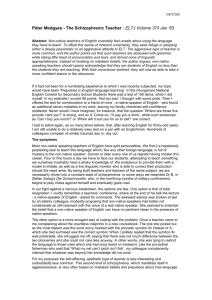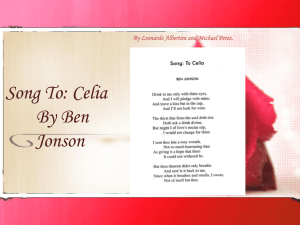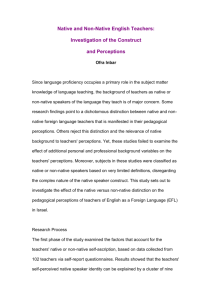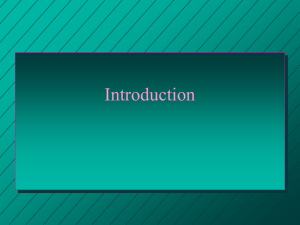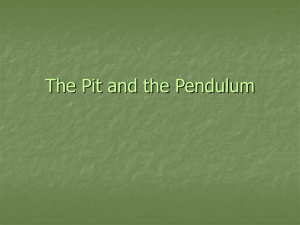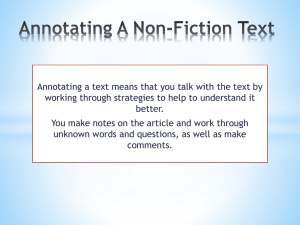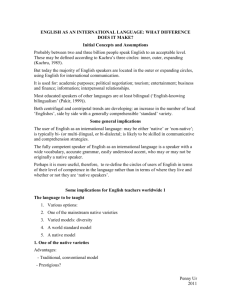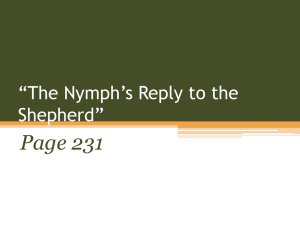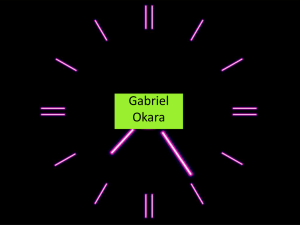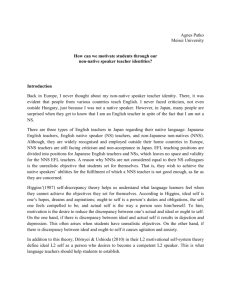link to the slides - language for teaching purposes
advertisement
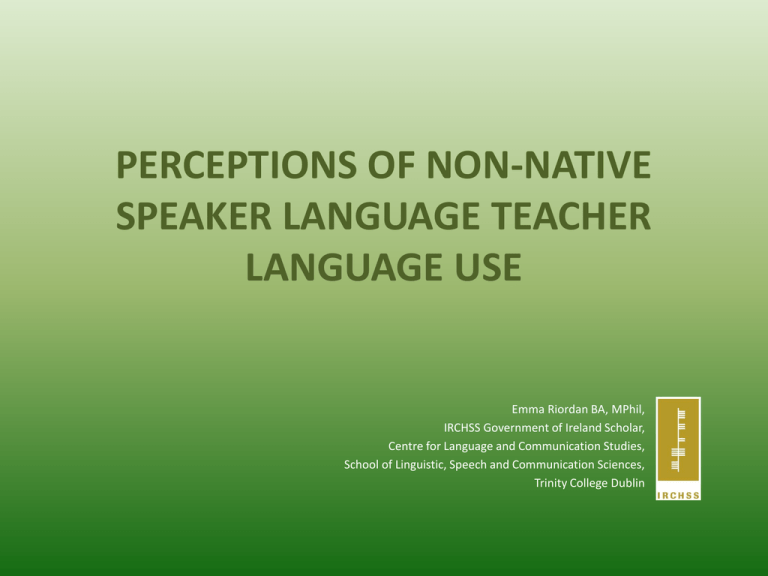
PERCEPTIONS OF NON-NATIVE SPEAKER LANGUAGE TEACHER LANGUAGE USE Emma Riordan BA, MPhil, IRCHSS Government of Ireland Scholar, Centre for Language and Communication Studies, School of Linguistic, Speech and Communication Sciences, Trinity College Dublin Language Competence THEMES IN RESEARCH ON THE NNSLT Defining native and non-native speakers • Davies, A. (2003). The native speaker : myth and reality • Canagarajah, A. S. (1999). Interrogating the "native speaker fallacy": Non-linguistic roots, non-pedagogical results NNSLTs’ self perceptions • Bernat, E. (2008). Towards a pedagogy of empowerment: The case of ‘impostor syndrome’ among pre-service non-native speaker teacher. • Rajogopalan, K. (2005). Non-native speaker teachers if English and their anxieties: Ingredients for an experiment in action research. NNSLTs as perceived by others • Lasagabaster, D., & Sierra, J. M. (2005). What do students think about the pros and cons of having a native speaker teacher?. • Llurda, E. (2005). Non-native TESOL students as seen by practicum supervisors. Teacher Education for NNSLTs • Cullen, R. (1994). Incorporating a language improvement component in teacher training programmes. • Medgyes, P. (1999). Language training: A neglected area in teacher education. EXPLORATORY RESEARCH METHODS Document Analysis • Leaving Certificate German Syllabus and Draft Guidelines for Teachers • National Council for Curriculum and Assessment reports • The European Profile for Language Teacher Education • Official inspectorate publications • 20 School inspection reports Guided Interviews • Pilot with trainers of teachers of other languages • Participant documents developed − Participant Information Leaflet − Consent form − Interview guide • Interview with teacher trainers representing 6 of 7 universities in ROI • Transcribed interviews QUALITATIVE DATA ANALYSIS RESULTS AND DISCUSSION Target Language Use Materials and Resources Target Language Use for Specific Purposes • Evaluating • Gestures/Expression • Correcting • Disciplining • Clarifying • Instructing •Explaining • Appropriate language • Synonyms • Questioning • Visual aides • Principled use of L1 Teacher Language Maintenance Communication Strategies Specific Learner Strategies • Handouts • Language courses • Charts • Worksheets • Posters • Authentic Texts • Notice Boards • ICT • Membership of the GDI • Visiting countries where the language is spoken • Speaking with native speaker assistants/students • Diagrams • Word fields • Vocabulary learning • Meta-cognitive strategies • Learner autonomy FUTURE RESEARCH Language for Teaching Purposes: A Language Needs Analysis of NNSLTs Exploratory Phase (QUAL + QUAL) Teacher Trainer Interviews Document Analysis Teacher Perspectives (QUAN + QUAL) Questionnaire Objective Observation (QUAN) Teacher Diaries Quantitative Classroom Observation THANK YOU! Contact: riordae@tcd.ie Visit: www.languageforteachingpurposes.com

